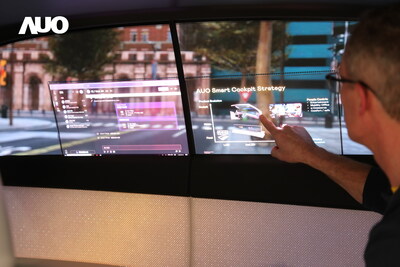
Automotive – Analysis PUBLISHED: 14 MAR 2011
Significance Japan’s auto industry has come to a halt as the physical impact of the disaster has combined with power-conservation measures to hit production.
Implications Although the human cost is of paramount concern, the ripple effect of the stoppages to supply and production in Japan will be felt in many parts of the world, including the United States, China, and Europe, as many key parts and technology are exported to global operations from Japan.
Outlook The situation is still fluid and the impact of the disaster still being assessed. This should become clearer as the week unfolds and more information is gleaned about the extent of the damage to infrastructure in the country, the manufacturing plants, and indeed the communities that support the industry.
The devastating earthquake and subsequent tsunami off the coast of north-eastern Japan has severely affected the country’s auto industry, as determined by an initial examination of the situation by IHS Automotive’s global analyst team. The exact impact of the earthquake and tsunami is still being assessed in terms of preliminary damage estimates, with work ongoing by the automakers, suppliers, government parties, and rescue agencies even at the time of writing.
Initial discussion of the severity of the impact on the industry is centred around a few main areas of concern: OEM Assembly Plant Production: Several auto plants in and around the northern Miyagi Prefecture have been shuttered, primarily Toyota, Honda, and Nissan facilities. Many more auto plants throughout the country are at risk of
closure: some owing to temporary rolling blackouts that are being considered in order to conserve power in light of the damage to several Japanese nuclear power plants; and some through disruption to the country’s transport infrastructure, affecting everything from parts delivery, personnel mobility, and shipping activity at the country’s ports.
As of this morning, the situation remained fluid with regard to production stoppages at Japanese original equipment manufacturers (OEMs) and the automakers have separately released the following information:
Toyota will idle all of its facilities in Japan from 14 to 16 March, with the loss of 40,000 units of production, but it is particularly concerned about two subsidiary facilities close to the Sendai region of Japan that make the Yaris subcompact and Scion-brand xD and xB models. Toyota’s Central Motor Corporation’s Miyagi plant and Kanto Auto Works’ Iwate plant have been shuttered as the company assesses the situation in the heavily damaged region. Toyota says that it has accounted for all members of its plants and subsidiaries in the region. Overall, nearly 45% of Toyota’s global production has been halted.
Nissan says that several plants have reported damage in the wake of the earthquake. Iwaki Plant, Tochigi Plant, Yokohama Plant, Oppama Plant, Zama Operations Center, and Honmoku Wharf have all reported some damage to buildings and/or equipment. The company is suspending all Japanese production operations through to 15 March and will assess resumption of production after that date later this week. Nissan has also reported damage to 1,300 United States-bound vehicles at the Port of Hitachi in Ibaraki Prefecture and damage to 1,000 vehicles stored at the Miyagi Service Centrer (Tagajo City, Miyagi Prefecture) due to the tsunami.
Subaru has reported that all of its manufacturing facilities have been shut across the country over the weekend, primarily owing to power-conservation efforts and damage checks, and that these are slated to resume production today.
Honda closed its Tochigi research and development facility north of Tokyo after earthquake damage caused a cafeteria wall to collapse, killing an employee. The company has idled several plants today through to 20 March. The Tochigi engine, transmission, and chassis parts plant has been shut, as well as two plants in
Saitama: the Sayama plant, which produces the CR-V, Accord, US Fit, Acura RL, and TSX; and the Ogawa Plant, which produces vehicle engines. In addition, two plants in Hamamatsu have been closed—one for vehicle transmissions, and one for outboard marine engines—while Honda has also shut the Suzuka plant, which produces the Japanese Fit, Civic, Civic Hybrid, Insight, and Honda CR-Z (all hybrid models). Honda says that it will suspend production at the Kumamoto factory (Ozu-machi, Kikuchi-gun, Kumamoto) as well. The company has added that it will co-operate with Japan’s Ministry of Economy, Trade and Industry’s electricity conservation efforts and the rolling blackout, prioritising the relief and recovery of affected areas.
Suzuki has closed all of its plants in Japan from 14 to 17 March, after which the company will assess the situation. The closures affect the Takatsuka plant, which assembles motorcycle engines; the Kosai passenger car assembly plant; the Iwata multi-purpose vehicle and commercial vehicle assembly plant; the Toyokawa
motorcycle and outboard motor assembly plant; the Sagara passenger car and engine assembly plant; and the Osuka plant foundry.
Mazda has reported that although none of its facilities has been affected by the disaster, as its plants are primarily located in southern Japan, well away from the quake-affected areas, it will idle production nonetheless.
Mitsubishi has shuttered plants and says that these will remain idle at least until tomorrow (15 March), as it co-ordinates shipments with suppliers located in the quake-damaged zone.
Supplier Production: Dozens of suppliers have been affected as well, encompassing manufacturers of all manner of components. Although the stoppages in local production will affect automakers’ ability to export from the region, the suppliers’ production stoppages could easily affect global production for these automakers, given that several of the affected component plants supply the OEMs’ facilities around the world withsystems and components that may not easily be shifted to other manufacturing locations. Stoppages at those plants that produce parts that have
second or third sources for manufacturing are unlikely to affect overall production very much, but disruption to production of parts that are unique and cannot be easily shifted has the potential to hit output badly at several automakers in the near term. Reports of possible stoppages at Toyota’s Auto Transmission facility in Hokkaido and specialised forgings in Tohoku, one of Panasonic’s key battery pack facilities, and several reports of compromised electronic component supply (chips, semiconductors, etc.) are extremely worrying. These types of critical components
have wide-ranging effects on Japanese production. Depending upon the linkages, inventory, and downstream pinch points, production by Japanese OEMs outside of Japan and possibly that of other OEMs eventually dependent on this supply is affected. The process of rebuilding the supply capability of these types of facilities
is not a matter of days or a couple of weeks, but will be evaluated on a case-by-case basis.
Inventory Destruction and Logistics Issues: Nissan has confirmed that nearly 2,300 Nissan and Infiniti vehicles waiting for shipment at the port of Hitachi were destroyed when the tsunami swept through the area. Ports along the coast have been affected by the tsunami, and shipping has been disrupted as priority is being given to disaster relief efforts. Internally within the country, road and rail lines have been destroyed throughout the regions north of Tokyo, so even if ports operate normally, the ability to transport goods overland is severely compromised and is likely to remain so for some time.
Outlook and Implications
Beyond the physical plant and facility issues are human issues that are unlikely to be resolved any time soon. The tragic loss of life and homes across the region means that even if infrastructure and facilities can be repaired, whole communities that have supported many of these plants have been uprooted or are still unaccounted for. An ongoing nuclear power emergency that has seen five power plants shut down could make power outages a routine occurrence across the country in the near term as well.
IHS Automotive is continuing to evaluate the situation as it progresses, with teams inside and outside Japan examining the impact of the disaster locally and on the global automotive community. It is still very early in the process, and we expect to
have a better idea of the initial impact on volumes as the week progresses and more information is gleaned about the extent of the damage to infrastructure in the country, the manufacturing plants, and indeed the communities that support
the industry.














More Stories
New generation of Donaldson compressed air dryer systems offers enhanced reliability and energy efficiency
Flexible Magna Manufacturing Solutions: The Key to Success in the Automotive Industry
Meet Rita Case – recipient of 2024 NAMAD Lifetime Achievement Award